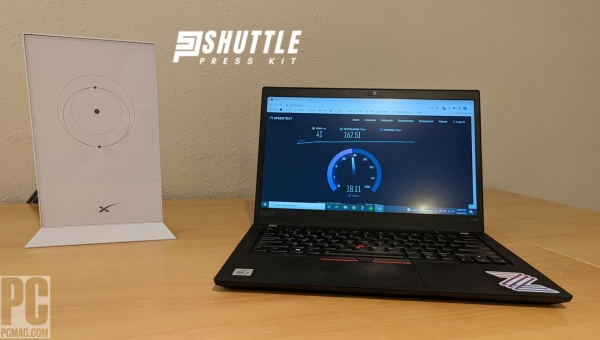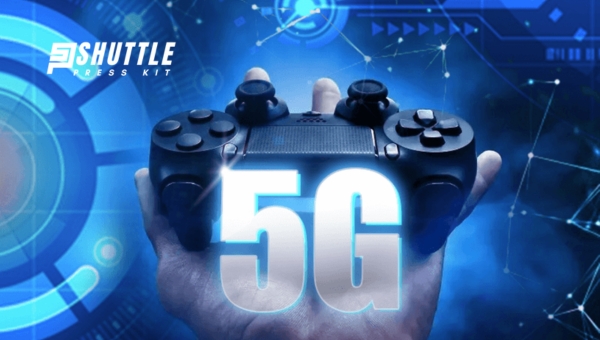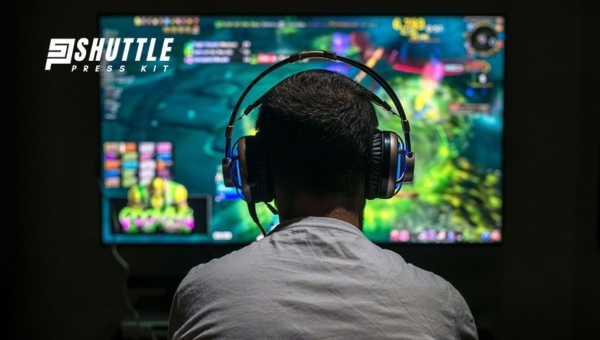In the ever-evolving landscape of online gaming, having a solid internet connection plays a pivotal role. But what if conventional broadband services are not cutting it for you? That’s where SpaceX’s satellite-based internet service – the revolutionary ‘Starlink‘ comes into play.
-In this article, we’ll dig deep into ‘Is Starlink Good for Gaming?’, unveiling how factors like speed, latency, and ping make a quick impression on your overall gaming experience.
Any tasks revolving around high-speed data transfer require a reliable and fast network connection. Online gaming is no exception. Aspiring pro gamers or streamers looking to nail that online championship or simply enjoy unhampered fun require speeds that can withstand heavy game files and real-time interaction necessities.
With Starlink under your belt, expect impressive download speeds ranging from 50 MBPS to above 150 MBPS under ideal conditions. This translates into smooth, lag-free gaming, leaving you to focus more on strategies and less on buffering screens.
Starlink For Gaming: Overview
As the world becomes more digitally oriented, gaming has evolved from a solitary, localized pastime to a vividly immersive global experience. But for all these sophisticated advancements, gamers are constantly wrestling with one stumbling block: internet connectivity.

Enter Starlink – SpaceX’s ambitious project that makes use of low-orbit satellites to deliver high-speed internet worldwide.
Concept and Design
Starlink is the brainchild of Elon Musk’s private aerospace manufacturer company SpaceX. The concept of Starlink revolves around leveraging thousands of mass-produced small satellites in a low Earth orbit (LEO) that work in combination with ground transceivers.
Musk intended to improve the quality and accessibility of internet services across the globe, particularly for those regions where traditional broadband seems hard to reach or deliver optimal performance.
However, given how much online gaming relies on seamless internet connectivity, Starlink could be more than just another ISP. It has the potential to revolutionize the gaming sector altogether.
How about we play our favorite MMO without a single lag hiccup? Sounds thrilling, doesn’t it? Well, that’s exactly what SpaceX aims for by promising lower latency and faster data transmission with their satellite broadband service – constructing a dream infrastructure that every gamer would love.
How it Works and its Potential Advantages for Gaming
Every gamer knows that speed kills in an FPS showdown; not just your reflexes but also your ping rate. Traditional ISPs can often struggle with delivering fast enough speeds for high-end online gaming due to physical limitations such as bandwidth congestion or geographically long routes data needs to travel before reaching you.
But Starlink works fundamentally differently; it uses multiple small satellites hovering relatively close in LEO. These satellites link together via laser beams forming a network streamlining the data path from servers right down to your keyboard actions at mind-boggling speeds.
The most promising advantage Starlink offers is its potential low-latency capabilities. Issues like latency and ping heavily impact gaming, causing frustrating lags and high reaction times. But with Starlink, gamers can potentially experience lightning-fast responsiveness.
Moreover, the satellite model also eliminates issues like ‘last-mile’ congestion, a common problem faced by traditional ISPs where they struggle to serve households located at the fringe of their coverage areas.
Also Read: ISEKIE Starlink Router Wall Mount
Speed and Latency: The Cornerstones for Gaming
When it comes to the gaming landscape, especially online gaming, there are two predominant factors – speed and latency.

These two parameters dictate not just how seamlessly we can play our favorite games, but also significantly impact our overall gaming experience, from the precision of our in-game movements to the swift execution of commands.
Unveiling Starlink’s Speed for Gaming
The discussion of speed in the realm of online gaming translates into a simple concept: faster is always better. Gamers crave a high-speed connection that can keep up with their fast-paced gameplay. Currently, Starlink provides an average download speed ranging between 50 Mbps to 150 Mbps as reported by users worldwide.
Now imagine loading your resource-heavy game without any buffer or dealing with frustrating mid-game lags. A dream isn’t it? Yes, that’s where Starlink shines! The sheer speed provided by Starlink facilitates uninterrupted and smoother gameplay which all gamers yearn for.
However, unlike regular broadband connections that report consistent speeds throughout the day, several users have noted on forums about variations in speed during different times of the day while using Starlink. This is primarily due to its Low Earth Orbit (LEO) design that relies on data bouncing off multiple satellites.
Analyzing Latency with Starlink
Let’s now delve into understanding latency and its role in shaping our gaming experience. Essentially, latency defines how responsive your game feels; higher latency leads to noticeable delays resulting in jerky character movements and premature game-overs.
When it comes down to figures concerning Starlink’s latency issue – SpaceX has revealed beta testing results showing a super low latency of around 20-40 milliseconds (ms). Now keep in mind, that these figures might seem slightly elevated when compared against fiber-optic connections offering under 10 ms latency timeframes.
But remember we’re comparing cabling systems welded beneath the earth, with hundreds of swanky satellites floating in space. Considering this aspect, it’s clear that Starlink’s latency performance is still impressive enough to support most types of online gaming without any noticeable lag.
To put it into perspective:
- High-latency issues during a fast-paced first-person shooter game can translate into slower response times which can be detrimental to your team
- On the contrary, with Starlink’s lower latency figures, your commands are executed almost instantaneously ensuring real-time gameplay dynamics – no more missing targets or delayed maneuvers!
Ping in Online Gaming
When it comes to online gaming, a powerful computer or an advanced gaming console might appear to be the vital elements.

Yet, there’s one more factor that is sometimes overlooked, but is incredibly impactful: the Ping. But what does this mean? How does it affect your gameplay? And most importantly, where does Starlink come into play?
Exploring the Role of Ping in Gaming
So let’s break it down. In its simplest terms, ping is essentially the reaction time of your connection. It measures how swiftly you get a response after you’ve sent out a request or in gaming terms – how quickly your action on the controller reflects on the screen. A fast ping means a more responsive connection which is particularly crucial in fast-paced online games where timing every move matters.
Ping can be likened to the rhythm of your gameplay, too slow and you fall out of sync with everything happening in your game world; too inconsistent and you can’t keep up with the moving parts in your virtual environment.
A low ping signifies quicker data transfer and has always been synonymous with a better online gaming experience which keeps players on their toes rather than lagging behind.
Revealed: Ping Status in Starlink
Now let’s talk about our main player here, Starlink – SpaceX’s satellite internet service known for shaking things up in the ISP world. Gamers around have been curious: “Does Starlink hold its ground when it comes to providing reliable low latency connections?”
According to SpaceX beta test results, Starlink boasts significantly lower latency figures—with ping times under 40 milliseconds claimed by some users right from their home set-ups! This doesn’t just match up favorably against traditional ISPs but offers significant improvements for rural or remote areas who’ve had no other choice but sluggish satellite services till date.
Also Read: How Fast Is Starlink Internet? Discover The Speed Results!
Comparing Starlink with Traditional ISPs
In the quest for optimal gaming experiences, gamers globally are continually on the hunt for high-speed internet connections coupled with low latency and ping.

The most frequent comparison made in this respect is between traditional Internet Service Providers (ISPs) and new game-changing technologies, including SpaceX’s satellite-based internet service – Starlink.
As we live through an era dominated by ISPs, it is interesting to cast our gazes towards a possible future led by SpaceX’s futuristic technology.
Performance Comparison based on Speed, Latency, and Ping
When comparing Starlink with traditional ISPs, one must take three key factors into account: speed, latency, and ping.
- Firstly the speed, traditional fiber-optic or cable broadband providers typically offer internet speeds ranging from 100 Mbps – to 1 Gbps depending upon a geographical location. On the contrary, Starlink’s beta testers have reported quite variable speeds ranging anywhere from 50 Mbps – 150 Mbps. Despite being slightly inconsistent due to its beta phase status currently, such speed standards already seem promising for graphic-intensive online gaming.
- Secondly comes latency, which plays a critical role in determining how real-time your gaming experience feels on online multiplayer platforms like Fortnite or Call of Duty. A lower latency number usually translates into a more seamless character control experience during your gaming sessions. Traditional broadband providers have latencies somewhere around 20 -30ms while Starlink has astonished many by providing claimed latency numbers between 20 –40ms even at its preliminary testing stages!
- Lastly but quite importantly comes ping rate comparisons; ping refers to how quickly data can get from your computer or console to the game server back again — measured in milliseconds (ms). It’s as crucial as latency because a lower ping ensures an instant response when you press that attack button against an opponent player in World of Warcraft or PUBG! With traditional wired connections usually providing ping rates under 50, Starlink’s current ping times have been seen to fluctuate between 20-40 ms as reported by testers which indicates a potential neck-to-neck competition in the future.
As we can see based on pure performance metrics, Starlink is emerging as a worthy contender against traditional ISPs albeit with few growing pains and teething troubles.
However, it is crucial to remember that these numbers represent customer experiences during its beta phase so consistency might be an issue that needs further improvement before it completely outshines the current ISP players.
Also Read: Starlink Port Forwarding Guide: Steps for Secure Connections
FAQs
What is the average speed provided by Starlink optimal for gaming?
Starlink’s average speed is about 100 Mbps, which allows seamless gaming at high definition.
How does latency affect my online gaming experience?
High latency can result in clear lag during gameplay, potentially disrupting your online gaming experiences and competitions.
Why is a low ping important in online games?
A low ping decreases the time it takes for data to travel between game and server, facilitating smoother game response times and better performance.
Can Starlink provide consistent low ping?
While it’s still early days, some users have reported pings as low as 20 milliseconds on Starlink, showing promise for more consistent performance in the future.
Q: How does Starlink compare with traditional ISPs in terms of speed, latency and ping?
A: Initial test shows that while traditional ISPs might offer higher peak speeds, the low latency and competitive speeds from Starlink may prove desirable for gamers especially those located where terrestrial broadband services are subpar.
Also Read: How to Contact Starlink Customer Support? – Quick Guide
Conclusion
Starlink for gaming presents an intriguing paradigm shift from traditional broadband. The promise of high speed, low latency, and consistent ping indicates its potential to revolutionize the gaming industry.
From FPS matches to real-time strategy games, Starlink could deliver a seamless experience free from the limitations of terrestrial internet providers.
With SpaceX’s continual improvement and expansion plans, it’s safe to proclaim that Starlink may soon become the preferred choice for gamers worldwide.
